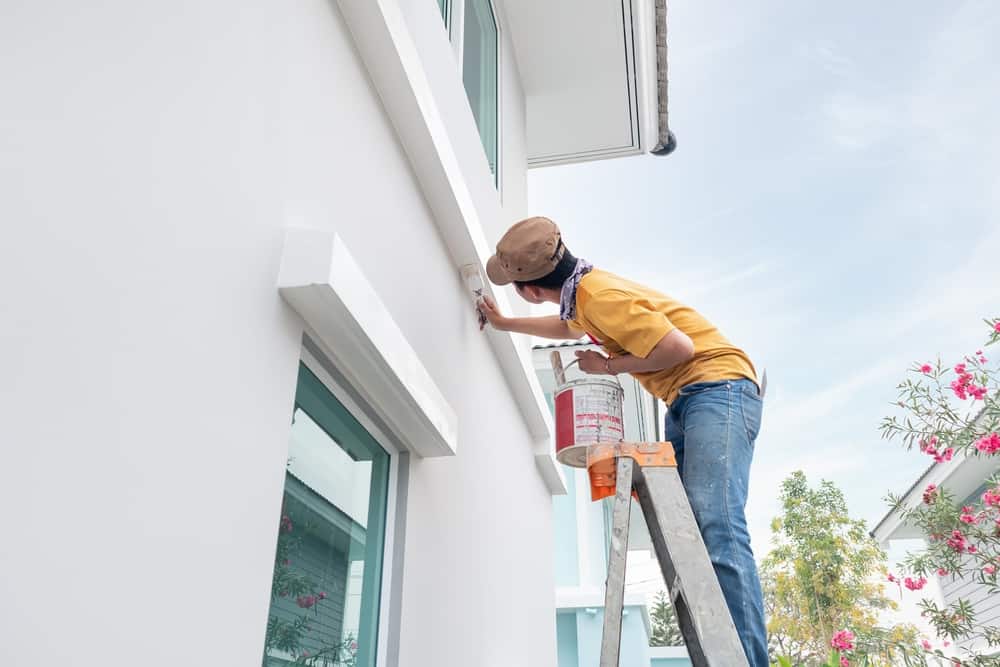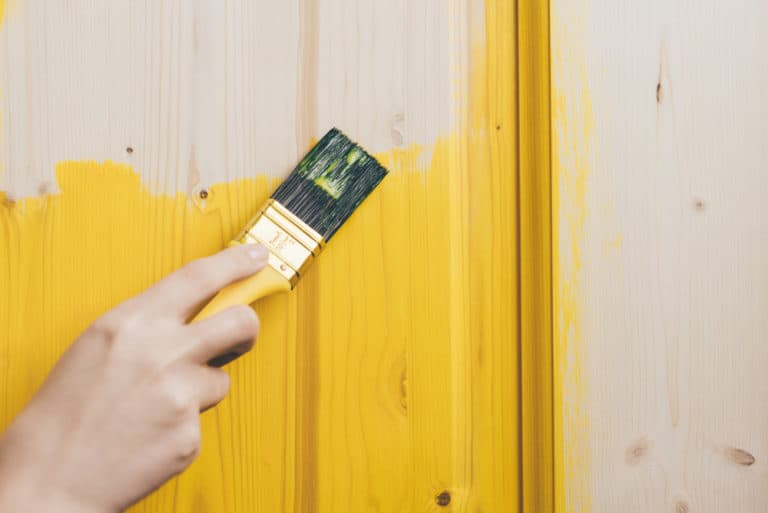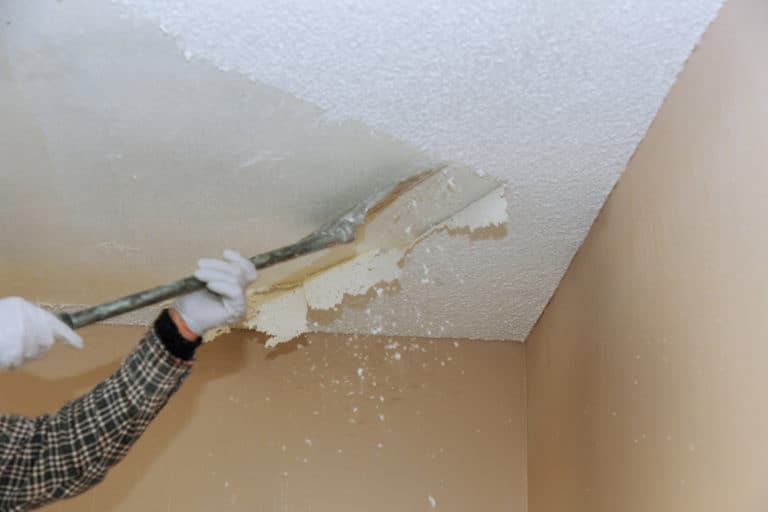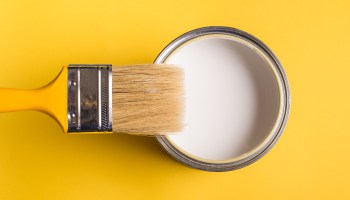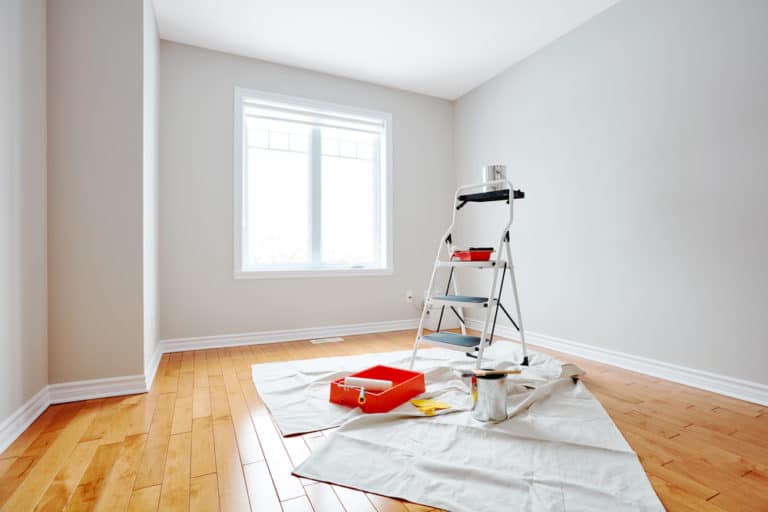Is It Better To Paint In The Summer Or Winter?
When we think of painting the interior or exterior of our homes, it is easy to assume that your project should be done in the summer or spring months. However, this doesn’t mean that the winter and painting don’t go well together. Is it better to paint in the summer or winter?
It is better to paint in the winter, as the air is less humid. You will notice that the paint job dries better and faster during the colder months, and winter is the best time to paint both your home’s interior and exterior. Painting quotes are cheaper during the winter, meaning you will save money.
Don’t wait for the summer months to give your home a fresh coat of paint. Continue reading with us as we discuss why it’s better to paint in the winter than in the summer!
Why Painting In The Winter Is Better Than Summer
Generally, we believe that summer is the ideal time to give our house the beautiful painting makeover it so desperately needs. However, contrary to popular beliefs, winter is a much more suitable time for house painting. There are multiple reasons for this.
Let’s explore these reasons why winter is the perfect time for painting your home:
Inexpensive Painting Quotes During The Winter
The demand for painting services is significantly less in winter than in any other season, thanks to the common misconception about painting in the winter. On the other hand, summer and spring are the seasons where professional painting services are most demanded.
This causes painting quotes to be much more expensive during these months. Hence, winter would be ideal for giving your home a stunning makeover with any colors you desire for much cheaper.
Suppose you have a large painting project for professional painters. In that case, they may even offer you an extra period to paint an additional room for free!
The Weather Is Usually Consistent During Winter
Before you start your house painting project or schedule some professional painters, it is crucial to check the local forecast. Scheduling the ideal time to paint will avoid painting errors.
It may also be good to keep in mind that the total duration of preparing the surfaces that need to be painted, priming, painting, and drying will depend on the air temperature and weather.
However, the temperature will barely fluctuate too low during the winter season. This makes it easier for indoor painting jobs to get done without having too many interruptions.
When it comes to exterior painting during the winter, it would be better if it’s not raining, as it could ruin your whole paint job.
During the warmer summer months, exterior paint should also not be painted on surfaces directly in the sun, which is why painting in the winter is better.
Less Humidity In The Air During Winter
During the summer months, there are many days when the high humidity levels can cause problems for painters.
This becomes especially true if the painter is not on a professional level. Suppose there is too much water vapor in the air. In that case, it will reduce the paint’s ability to adhere, making it difficult to spread evenly on a surface.
Too much moisture in the air could also possibly result in straining and adhesion problems. On the other hand, because the humidity levels are consistently low and the air is limited during the winter, it makes a painting job much more accessible and even easier to get done!
You Can Take Advantage Of The Flexibility During The Winter
when it gets too hot during the summer, you may be restricted when it comes to some activities. This includes painting. Winter will offer you much more flexibility in all your activities.
As most professional painters will stay free during winter, you will be able to schedule and fix the time according to your preference.
You may also get some chances to take off work due to the holiday season, so you can choose a painting schedule that suits you and where you will be available at home.
You Won’t Have To Wait For A Painter In Winter
Contractors will be at their busiest during the summer months, primarily doing exterior work. Starting a painting project in the winter will be less expensive, but it will also take a shorter time from start to finish.
This is because it’s far less likely that you will need to wait on painters to get through an existing list of clients and jobs before they can start with your home.
If you decide to paint your home during winter, it will take some careful planning, no matter if you want to paint the inside or outside.
Then again, every painting project takes careful planning, so there is no reason not to plan your painting project for the next winter and get excited about it!
Painting In Winter Leaves You Time To Enjoy The Summer
Last but not least, painting and rejuvenating your home during the winter will give you the perfect time to plan a vacation during the summer.
A lot of homeowners prefer to repaint one or several rooms in their home throughout the course of the winter, as they want to avoid having to take care of the job when they can be enjoying the lovely summer weather.
Painting in the winter could become your favorite strategy if you keep in mind all the benefits that come along with painting in the winter.
If you have the time in your schedule, getting a whole painting project out of your way will free up some of your time in the future, where you will have time to enjoy your newly painted exterior or interior a lot more.
Winter can offer you loads of time to focus on the things you may plan or rush to get done during the peak season, and painting is no exception!
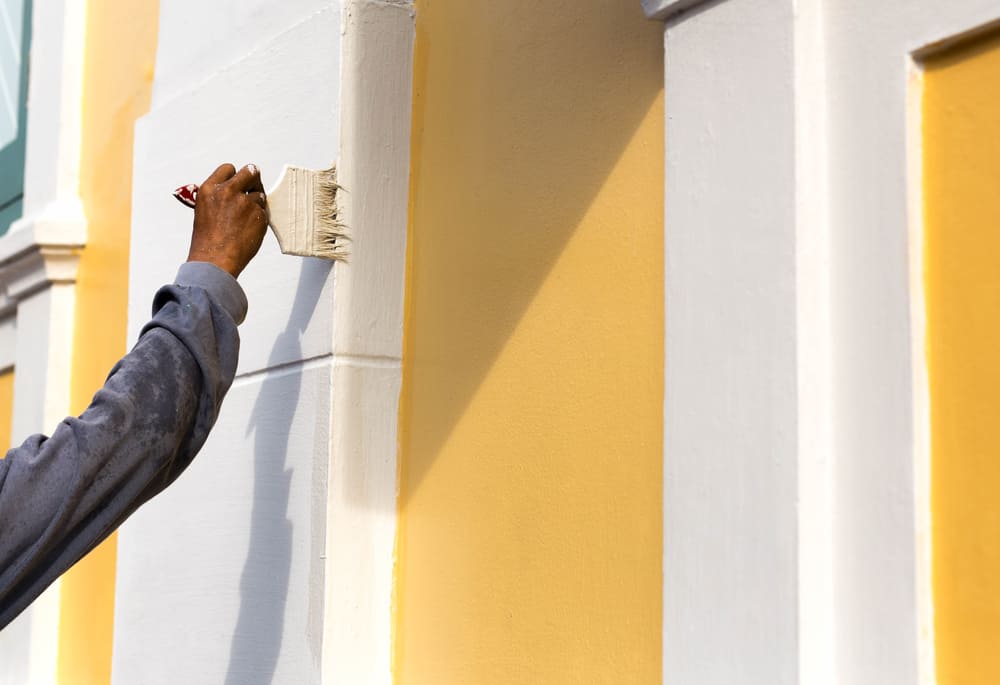
The Concern Of Painting In Winter
The only concern that rises when painting in winter is the wall surface temperatures. This is a crucial aspect you should consider when you’re painting the inside of your house during winter times.
The minimum application temperature requirements are associated with the temperature of the air and the temperature of the wall or surface that needs to be painted.
However, all you need to do is check if the ceiling or wall surface is colder or warmer than the air around you.
More often than not, the surface will be much colder than the air temperature during the winter. If your air temperature is over 50 degrees Fahrenheit, but the surface is still colder, you should consider using a hairdryer or heat gun to warm the surface prior to painting.
Painting professionals will compare the temperature differences between air and surface using infrared thermometers.
This takes the guesswork out of the painting job, and these thermometers also emit an infrared beam which measures the surface temperature of just about anything you point at.
Hence, if you feel like you need to understand surface temperature better, you can consult with a residential painting service or painting professional.
Five Tips For Painting During The Winter
When starting with a painting job in the winter, there are some tips and tricks you may want to know about. Let’s look at the five things you can do when painting during the winter to ensure everything will go as smoothly as possible!
Preparing For The Paint Job Correctly
When you need to prepare for a paint job, it is crucial that you take some time to prepare your materials and space. This avoids expensive mistakes and will keep your materials and surfaces safe. Before painting any area of your house, you need to make sure the surfaces are clean from dust or any dirt.
You may be very eager to jump right in and start, but removing dust and dirt particles with a tack cloth or rag will help to ensure a smooth surface and keep any of your protection materials in place.
After you have cleaned your surfaces, you should take the time to place drop cloths to protect your floors and furniture.
You can also cover your floors and countertops with a surface protection board.
Masking paper or masking films would be best for your baseboards, doors, cabinets, and windows.
For the trim of your home and the electric sockets and other small detailed spaces, you can use some painter’s tape.
Paint Your Ceiling, Walls, And Leave Trims For Last
If you’re painting a large space, it is normal to become overwhelmed and not know where to start first. When it comes to painting, it is almost impossible not to splatter, spill or drip.
This is why it is essential that you paint your room in the correct order. As a rule of thumb, most painting experts will advise you to paint your ceiling first, move to the walls, and finish your painting job 0ff with the trim.
If you plan on painting your floors as well, it would be best to leave them for last!
Paint With Even Strokes
It is recommended that you use a roller instead of a brush when you’re painting larger surfaces, such as walls. You could make use of an extension pole to speed up your paint project. If you want to ensure an even and smooth surface, you should make sure to:
- Cover every inch of your roller with paint before starting
- Remove any excess paint from the roller to avoid the color from dripping
- Follow the same pattern as you use the roller to apply paint
- Carefully pick up the roller once you have painted the area.
- Reapply paint on your roller, move to another area, and repeat the process.
Stay Calm And Let The Paint Dry Thoroughly
Once you have painted your desired area, the temptation to apply the second coat of paint could be overwhelming. However, it would be best to wait a bit. You must make sure the first coat has completely dried before adding another coat or two.
You can help make the drying process of the paint faster by opening up any windows for extra airflow. You will be pleasantly surprised if you see how much faster your paint dries during the winter.
You have to keep in mind that not all paints are created equal, and different kinds of paint will have different drying times.
If you use oil-based paints, you need to let your surface dry for at least 24 hours. However, if you use latex-based paint, you can start with the second coat of paint within four to six hours.
Start With The Cleaning Up Process
As we all know, cleaning up is the least fun of any project or job. However, proper disposal and cleanup of the paint are essential parts of the painting process.
If you used latex paint, you could simply rinse it with warm water and soap out of your brushes. You can dispose of any washout in a government-approved area that will not seep into the groundwater.
You can also invest in an environment-friendly washout system. When it comes to using oil paint, things can become more tricky. If you need to remove oil-based paint, you will need to use a paint thinner to wash your equipment.
It would be best to dispose of paint washout in an approved area. If you dispose of paint washout improperly, you can pollute groundwater and harm the environment.
Lastly, you can store any leftover paint in a safe place if you need to do any future touchups. The cold weather may be the ideal time for a fresh coat of paint!
Conclusion
Now that you are aware of all the advantages winter can offer you for your paint job, you can take off your blanket and plan a whole makeover for your house! Since you are more likely to spend more time indoors during the winter, you can enjoy your fresh coat of paint to the fullest!
Any professional painters will be more invested in their services during the winter and will have more time to do the paint job as you prefer.
Resources
- https://www.prioritycoatings.com.au/why-winter-is-a-good-time-for-interior-painting-jobs/
- https://elitetradepainting.com/blog/when-is-the-best-time-of-year-for-interior-painting-summer-vs-winter/
- https://trimaco.com/blog/5-tips-for-interior-painting-in-the-winter/
- https://www.bestpickreports.com/blog/post/4-reasons-why-painting-in-the-winter-isnt-a-bad-idea/
- https://www.thespruce.com/painting-season-for-house-exterior-1821978

